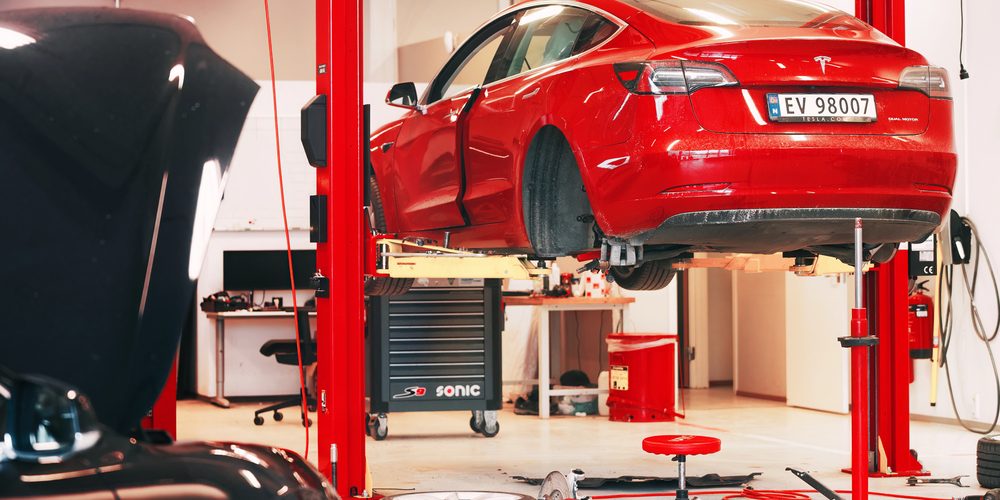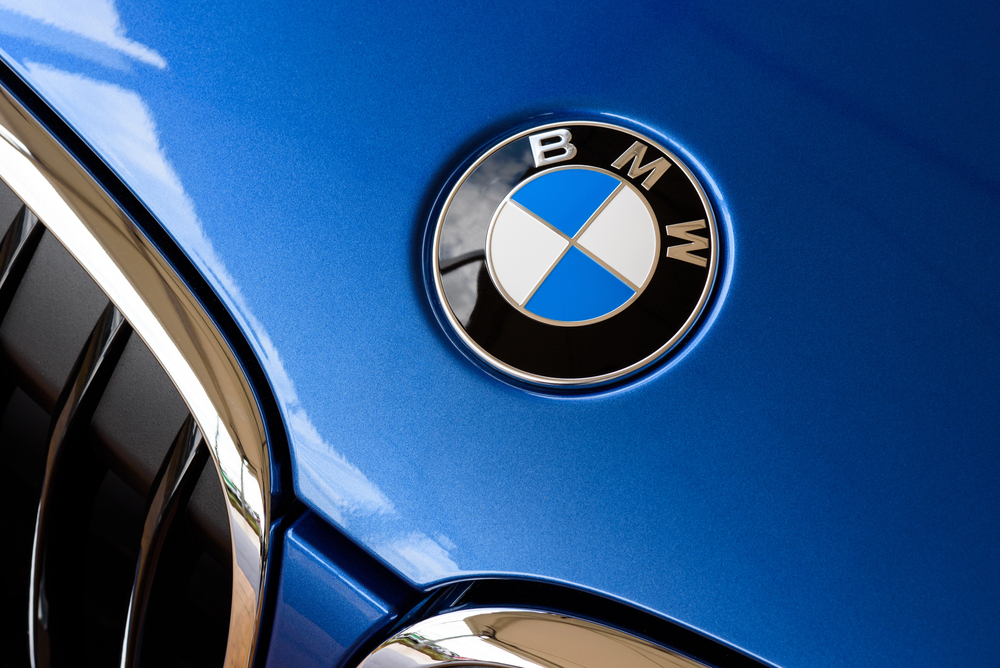Do Electric Cars Need Less Maintenance?


- Electric cars usually need less routine maintenance than petrol or diesel cars because there are fewer moving parts and no engine oil or exhaust system.
- EVs still need tyres, wheel alignments, cabin filters, brake fluid, battery coolant, software updates, and 12-volt battery checks.
- Extra weight and light brake use can speed up tyre wear and let brake rotors corrode if they are not serviced.
Yes. Electric cars usually need less routine maintenance than petrol or diesel cars because they have fewer moving parts, no engine oil, no exhaust system, and far less brake wear thanks to regeneration.
That said, EVs are not maintenance-free. You still have to look after tyres and alignment, replace the cabin filter, change brake fluid on schedule, service the thermal system that cools the battery and power electronics, keep software current, and test the 12-volt battery.
Because EVs are heavier and rely on regeneration, tyres can wear faster, and brake hardware can corrode if it is never exercised.
Understanding both sides of the equation helps you plan a sensible service schedule and avoid surprise costs…
Maintenance differences between electric and petrol or diesel cars
One of the biggest selling points for electric vehicles (EVs) is the claim that they require less maintenance than traditional petrol or diesel cars. While this is largely true, it is not because EVs are indestructible. Instead, it comes down to the fact that they have fewer mechanical systems that need attention, and many of the wear-and-tear items in internal combustion engine (ICE) cars simply do not exist in an EV. However, that does not mean maintenance disappears altogether. It is worth understanding exactly what you will and will not be servicing so you can plan for the real-world upkeep of an EV.
Components you will not find in an EV
An electric car does away with many of the systems that drive up ownership costs for petrol and diesel vehicles:
- Engine oil and filter changes: EVs do not have an engine in the traditional sense, so there is no oil to lubricate pistons or crankshafts. This alone removes a major recurring service expense.
- Spark plugs and ignition system maintenance: No internal combustion means no ignition system. You will never have to replace spark plugs, ignition coils, or distributor components.
- Air intake filters for the engine: With no combustion engine, there is no need for an engine air filter.
- Timing belts or chains: These major service items in ICE cars are not present in EVs, removing the risk of expensive replacements when they wear out.
- Exhaust system maintenance: There are no catalytic converters, mufflers, or exhaust pipes to rust or clog, which means one less system to monitor.
- Fuel system servicing: EVs do not have fuel injectors, pumps, or filters to clean or replace.
By removing these systems, EVs naturally cut down the number of garage visits for routine servicing. You also avoid many of the high-cost “surprise” repairs that come with complex engine components in ICE vehicles.
Systems that EVs still need to maintain
While EVs eliminate a long list of engine-related maintenance items, they are not maintenance-free. The following systems still require attention on a regular basis:
- Cabin air filter: Just like in ICE cars, the cabin filter cleans the air entering the interior through the climate control system. This should be replaced every 12 to 24 months depending on the manufacturer’s recommendation and your local air quality.
- Brake pads and rotors: Regenerative braking reduces brake wear significantly, but it can also lead to a unique issue. Because the friction brakes are used less, the rotors can develop corrosion, especially in damp climates. Occasional heavy braking can help keep them clean, but they should still be inspected regularly.
- Brake fluid: Hydraulic brake fluid absorbs moisture over time, which can affect braking performance. It needs replacing at fixed time intervals regardless of mileage.
- Tyres: EVs are heavier than comparable ICE cars due to their battery packs. This extra weight, combined with the instant torque delivery of electric motors, can lead to faster tyre wear if you do not rotate them regularly. Wheel alignments also become more important to prevent uneven wear.
- Battery and inverter coolant: Many EVs use liquid cooling to manage the temperature of the battery pack and inverter. This coolant needs changing according to the manufacturer’s schedule to maintain efficiency and prevent overheating.
- 12-volt battery: EVs still have a traditional 12-volt battery to power electronics, door locks, and control systems. This small battery will eventually need replacing, just as it does in an ICE vehicle.
- Air conditioning service: The climate control system still uses refrigerant and requires periodic checks for leaks and performance.
- Software updates: EVs receive regular software updates to improve performance, fix bugs, or add new features. Many of these updates can be done over the air, but in some cases, you may need to visit a service centre.
Why less maintenance does not mean no maintenance
While the reduced number of moving parts in an EV can mean fewer breakdowns and lower running costs, it is important not to ignore the systems that do remain. Neglecting tyre rotations or brake servicing, for example, can lead to premature wear and unnecessary expense. Likewise, missing scheduled coolant changes can shorten battery life, which is one of the most expensive components to replace in any vehicle.
Ultimately, the reduced maintenance requirements of EVs make them attractive for cost-conscious drivers, but the key to getting the most out of your investment is to follow the manufacturer’s service schedule and not fall into the trap of thinking “no engine” means “no maintenance.”
Advantages of less maintenance in EVs
One of the biggest selling points for electric vehicles is the long-term reduction in upkeep compared to petrol or diesel cars. Fewer moving parts and simplified drivetrains translate into lower running costs, less time in the workshop, and fewer surprises for owners. These benefits are not just about saving money; they also make EV ownership more convenient and predictable.
Lower servicing costs
Without oil changes, spark plug replacements, or exhaust repairs, the average annual servicing bill for an EV can be significantly lower. While exact savings vary by model and location, many owners report paying 20–40 percent less in routine maintenance compared to their previous petrol or diesel cars. This cost advantage can add up over several years, making the higher initial purchase price of an EV easier to justify.
Reduced downtime
Routine servicing for an EV is often quicker and less frequent. Many manufacturers set service intervals at 12 months or longer, and some checks can be completed in under an hour. This means fewer days off the road and more time enjoying the car.
Fewer unexpected repairs
By removing complex engine components, EVs reduce the risk of sudden and expensive failures. There is no timing belt to snap, no turbocharger to replace, and no fuel pump to fail. This not only saves money but also removes much of the uncertainty that can come with running an older ICE vehicle.
Longer component lifespan
Some EV systems benefit from the reduced strain of electric operation. Regenerative braking helps extend the life of brake pads and rotors, while the lack of vibration from an engine can reduce wear on suspension components and interior fittings. This can help the car feel newer for longer and maintain its value on the used market.
Better long-term planning
Because EV servicing is simpler, owners can more easily predict and budget for future costs. Aside from tyres, coolant, and brake servicing, most expenses are known well in advance, which gives peace of mind over the lifetime of the vehicle.
Owning an EV can therefore be less stressful when it comes to upkeep. While servicing is still required, the simplified design and fewer wear points mean the focus shifts from frequent mechanical repairs to occasional system checks and software updates.
Potential drawbacks and hidden maintenance costs
While electric cars generally require less maintenance than their petrol or diesel counterparts, “less” does not mean “none.” There are costs that some owners overlook, and others that can come as a surprise after a few years of use. Understanding these factors is critical for setting realistic expectations and avoiding disappointment.
Tyre wear from extra weight
Electric cars often weigh significantly more than similar-sized petrol or diesel models due to the large battery pack. For example, a Tesla Model 3 Long Range tips the scales at over 1,800 kg, roughly 300 kg heavier than many comparable sedans. This extra weight increases the load on tyres, particularly during cornering and acceleration, which can lead to faster tread wear. Owners of high-torque EVs sometimes report replacing tyres 20 to 30 percent sooner than they did on previous cars.
Brake corrosion from low use
Regenerative braking reduces wear on brake pads and discs, but it also means these components are used less frequently. When brakes sit idle for long periods, especially in damp climates, corrosion can set in. Surface rust on rotors is common, but if it progresses, it can reduce braking performance and require costly replacement. Regularly engaging the friction brakes during driving can help, but it is an area many new EV owners overlook.
Battery coolant and thermal management
Most modern EVs use liquid cooling systems to regulate battery temperature. Over time, this coolant degrades and needs replacement, often every five to seven years depending on the manufacturer’s schedule. Neglecting this service can reduce battery efficiency and, in extreme cases, shorten battery lifespan. Replacement costs vary but can run several hundred dollars.
12-volt battery replacement
Even though the main drive battery powers the vehicle, EVs still rely on a traditional 12-volt battery for systems such as lighting, locks, and infotainment. These batteries typically last three to five years, similar to those in petrol or diesel cars, and cost between $150 and $400 to replace depending on the model.
Software updates and diagnostic checks
Many EV manufacturers issue regular software updates to improve performance, add features, or fix bugs. While these are often delivered over the air at no extra cost, some deeper diagnostic checks or firmware updates must be performed at a service centre, particularly if the update involves safety systems or battery management. Out-of-warranty visits for such work can carry labour fees.
High-cost repairs outside warranty
Although routine maintenance is cheaper, repairs for specialised components can be expensive if they occur after the warranty period. A replacement drive unit, onboard charger, or battery module can cost thousands. While these failures are rare, they underline the importance of choosing a model with a strong warranty and proven reliability record.
Owning an EV can reduce everyday servicing costs, but it is essential to factor in these less obvious maintenance needs. Proactive care, including regular brake usage, tyre rotations, and scheduled cooling system service, can help prevent these hidden expenses from escalating.
Comparing EV and petrol/diesel maintenance over the long term
When comparing the long-term maintenance costs of electric vehicles (EVs) to petrol or diesel cars, it is important to look beyond the headline claim that EVs are “cheaper to run.” While that statement is true in many cases, the actual savings depend on mileage, climate, driving style, and the specific models being compared.
Service schedules and cost trends
Electric vehicles:
- Fewer moving parts mean fewer wear items. There is no oil to change, no timing belt to replace, no spark plugs to service, and no exhaust system to corrode.
- Key recurring maintenance includes tyre replacement, brake fluid changes, cabin air filter replacements, coolant changes for the battery thermal management system, and 12-volt battery replacement.
- Based on 2024 service pricing from Tesla, Hyundai, and Nissan, routine maintenance for most EVs over five years typically costs between $1,200 and $2,000.
Petrol and diesel vehicles:
- Require regular oil changes, which cost $150 to $300 per year depending on oil type and service location.
- Other recurring costs include transmission fluid changes, exhaust system repairs, engine air filters, fuel filters, spark plugs, and more frequent brake servicing.
- Over a five-year period, the average maintenance cost for popular petrol sedans such as the Toyota Camry or Honda Accord is between $3,000 and $4,000, according to AAA’s 2023 Your Driving Costs report.
Tyre costs
Tyre replacement frequency can be higher for EVs due to their extra weight and instant torque delivery. Data from tyre manufacturers such as Michelin and Continental suggests that EV tyres can wear out 10,000 to 15,000 km sooner than those on comparable petrol cars. Over 100,000 km of driving, this can mean one additional set of tyres, adding $800 to $1,200 to the total cost.
Brake system longevity
Petrol and diesel cars may need brake pad replacement every 40,000 to 60,000 km, depending on driving conditions. EVs, thanks to regenerative braking, can extend that to 100,000 km or more, which could save between $400 and $1,000 over the life of the vehicle. However, brake corrosion from low use can reduce these savings if not managed with periodic friction braking.
Major component repairs
- EVs: Most major repairs are rare during warranty, but a battery replacement outside warranty can cost $10,000 to $20,000. Fortunately, most EV batteries last 10 to 15 years or longer, with less than 1 percent of modern EV packs failing within eight years according to Recurrent Auto’s 2023 study.
- Petrol/diesel: Large repairs can include transmission rebuilds ($4,000 to $6,000), head gasket replacements ($2,000 to $3,000), and catalytic converter replacement ($1,000 to $2,500). These repairs are more common as the vehicle approaches or exceeds 150,000 km.
Ten-year total
Based on service records from fleet operators and repair cost databases such as RepairPal, a typical EV can cost between 30 and 40 percent less to maintain over ten years compared to a similar petrol or diesel car. This assumes average mileage of 15,000 km per year and does not include fuel or electricity costs, which can further widen the savings gap in favour of EVs.
While EV owners often enjoy lower annual servicing bills, the key to maximising these savings lies in preventative care. Proper tyre rotation, brake use, and battery cooling system servicing can prevent small issues from turning into expensive repairs. Petrol and diesel cars still have an advantage in repair familiarity, with more mechanics trained to work on them, but this gap is narrowing as EV adoption increases.
Extending the life of your EV through smart maintenance
Electric vehicles may require less maintenance than petrol or diesel cars, but neglecting them can still lead to costly repairs and reduced performance over time. Extending the life of an EV involves understanding its unique components and tailoring upkeep accordingly.
1. Battery care and thermal management
The traction battery is the most valuable and critical part of an EV.
- Keep the state of charge between 20 and 80 percent for daily driving to minimise degradation, as shown in studies from the National Renewable Energy Laboratory (NREL).
- Avoid repeatedly charging to 100 percent unless preparing for a long trip, as full charges held for extended periods can increase chemical wear in lithium-ion cells.
- Park in shaded areas or garages to limit heat exposure. Excessive heat accelerates capacity loss, while extreme cold can temporarily reduce range.
- Ensure the battery cooling system is serviced according to the manufacturer’s schedule. Neglecting coolant changes can lead to overheating, which shortens battery lifespan.
2. Tyre management
EVs are heavier than comparable petrol cars, and their instant torque can cause faster tread wear.
- Rotate tyres every 8,000 to 10,000 km to maintain even wear. Michelin’s EV testing shows that consistent rotation can extend tyre life by up to 20 percent.
- Keep tyres inflated to the correct pressure. Underinflation increases rolling resistance, reducing efficiency and increasing wear rates.
- Consider EV-specific tyres, which use stronger sidewalls and low rolling resistance compounds to handle extra weight while maintaining range.
3. Brake system preservation
Regenerative braking significantly reduces pad wear, but brake components still require periodic attention.
- Use the friction brakes occasionally, especially in wet climates, to prevent disc corrosion and ensure smooth operation.
- Have brake fluid replaced every two to three years, as moisture contamination can damage hydraulic components.
4. Software and firmware updates
Modern EVs rely heavily on software for battery management, motor control, and safety features.
- Accept over-the-air updates promptly, as they can improve efficiency, add features, and fix system bugs. Tesla, for example, has released updates that improve regenerative braking and battery preconditioning.
- If over-the-air updates are not available, schedule service visits to install manufacturer-issued updates.
5. Charging habits and infrastructure
- Use high-power DC fast charging sparingly. Recurrent Auto data shows that frequent high-speed charging can increase battery degradation rates by up to 10 percent over eight years.
- Install a Level 2 home charger to allow slower, more controlled charging, which is gentler on the battery.
- Keep charging cables and connectors clean and dry to maintain efficiency and safety.
6. Seasonal preparation
- In cold climates, precondition the cabin and battery while the car is plugged in to reduce range loss and strain on the battery.
- In hot climates, avoid prolonged parking with a high state of charge in direct sunlight, as it accelerates degradation.
7. General inspections
- Check suspension components annually, as the extra EV weight can put more stress on bushings and shocks.
- Inspect underbody shielding and aerodynamic panels for damage after winter or rough road driving, as these parts can affect efficiency if not repaired.
By applying these practices, EV owners can often surpass 300,000 km before encountering significant battery capacity loss, according to case studies from fleet operators. Thoughtful, consistent maintenance ensures the vehicle delivers peak performance, maintains higher resale value, and delays the need for costly repairs or replacements.
The Bottom Line on Electric Car Maintenance
Electric vehicles are changing the landscape of car ownership, and while they eliminate many of the traditional maintenance tasks associated with petrol or diesel cars, they are not “maintenance-free.” Owners who understand and manage the unique demands of EV technology can extend the vehicle’s lifespan, preserve battery health, and maximise efficiency.
Data from the International Council on Clean Transportation shows that EVs can reduce maintenance costs by up to 40 percent compared to internal combustion vehicles over the first 160,000 km. However, those savings depend on disciplined upkeep. Battery management, tyre care, brake system preservation, and software updates are non-negotiable for maintaining reliability and performance.
An EV that receives consistent, targeted maintenance can remain in peak condition for well over a decade, often surpassing 300,000 km before major battery degradation becomes an issue. By combining careful charging habits with regular inspections and seasonal preparation, owners can protect both their investment and the long-term usability of their vehicle.
Owning an EV is not just about adopting new technology; it is about adapting to a smarter, more data-driven approach to vehicle care. Those who make this shift stand to enjoy lower costs, greater reliability, and a better driving experience over the life of the car.
If you enjoyed this article, be sure to follow us on Microsoft Start.
Electric Car Maintenance FAQs
What is the biggest problem with electric cars?
The biggest challenge for electric cars is the limited availability of fast-charging infrastructure compared to petrol stations, especially in rural areas or on long-distance routes. While battery technology continues to improve, charging times are still longer than refuelling a conventional vehicle. This can lead to range anxiety for drivers who travel frequently or cannot charge at home.
What is the main disadvantage of an electric car?
The main disadvantage of an electric car is the higher upfront purchase price compared to a similar petrol or diesel vehicle, even though running costs are usually lower. This is largely due to the cost of the battery pack, which remains the most expensive component. Incentives and falling battery costs are helping to close the gap, but price remains a consideration for many buyers.
What is the lifespan of an electric car?
Most modern electric cars are designed to last well over 300,000 kilometres, with battery packs typically warrantied for eight to ten years. Advances in battery management systems mean degradation is slower than in early EVs, and many batteries still retain more than 80% of their capacity after the warranty period. Regular servicing of non-electric components, such as brakes and tyres, will also help extend an EV’s usable life.
How often does an EV need to be serviced?
Electric vehicles generally need servicing once a year or every 15,000 to 20,000 kilometres, depending on manufacturer guidelines. Service checks focus on items such as tyres, suspension, brakes, cabin air filters, battery coolant, and software updates rather than oil changes or spark plug replacements. This reduced list of serviceable parts is one reason EV maintenance costs are usually lower.
Does a Tesla need servicing?
Yes. While Teslas require less routine maintenance than petrol or diesel cars, they still need periodic inspections for tyre wear, brake fluid condition, battery coolant levels, and suspension components. Tesla also recommends rotating tyres every 10,000 kilometres and performing software updates to ensure the vehicle runs at peak efficiency.
What is the average maintenance cost for an electric car?
On average, electric car maintenance costs are 20–40% lower than for petrol or diesel cars. The reduced cost comes from fewer moving parts, no oil changes, and less brake wear thanks to regenerative braking. Annual servicing costs vary by brand and model, but many EV owners spend between $200 and $400 a year on maintenance.
How much is a battery for a Tesla?
The cost of replacing a Tesla battery varies widely depending on the model and battery size, but it typically ranges from $15,000 to $25,000 including parts and labour. Prices are gradually falling as battery technology improves, and most Tesla batteries last well beyond their warranty period, which is eight years or between 160,000 and 240,000 kilometres depending on the model.
Do BYD cars need servicing?
Yes. BYD electric cars still require regular maintenance, including tyre rotations, brake inspections, coolant checks, and software updates. Like other EVs, they avoid oil changes and exhaust-related repairs, but keeping up with scheduled servicing is essential for safety and to maintain warranty coverage.
Are Teslas expensive to maintain?
Overall, Teslas are not expensive to maintain compared to petrol or diesel cars, as they have fewer serviceable parts. Costs are generally focused on tyres, brake fluid, battery coolant, and software support. While out-of-warranty repairs such as battery or drive unit replacement can be costly, most routine maintenance remains affordable.










